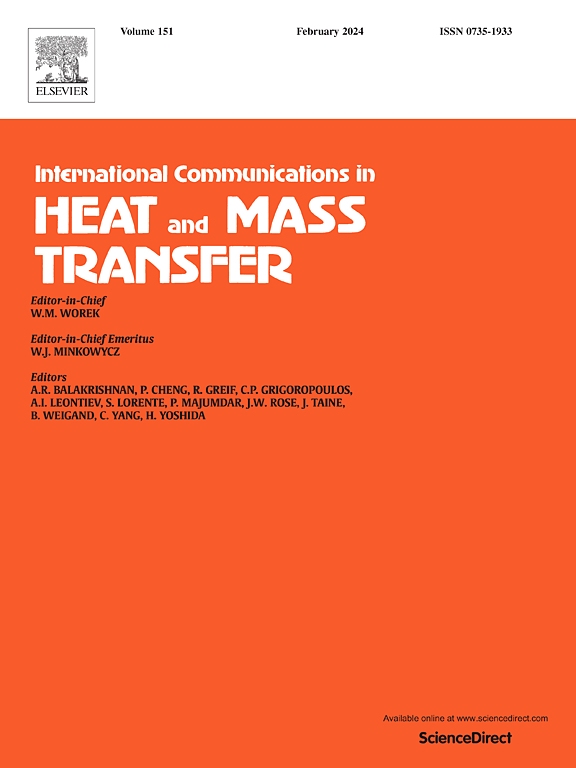A layered metastructure-based smart radiant regulator with enhanced emissivity modulation utilizing phase change material
IF 6.4
2区 工程技术
Q1 MECHANICS
International Communications in Heat and Mass Transfer
Pub Date : 2025-04-03
DOI:10.1016/j.icheatmasstransfer.2025.108933
引用次数: 0
Abstract
Based on thermal radiation, radiative cooling is a widely used technology, and plays an important role in many scenarios such as passive building cooling and infrared camouflage. Currently, dynamic control of thermal radiation devices is endowed with great expectations. However, a more efficient systematic strategy for designing smart radiant temperature regulators (SRTRs) is still urgently needed. By leveraging the phase change properties of vanadium dioxide, the proposed SRTR achieves dynamic modulation of thermal emissivity, demonstrating an average total directional emissivity exceeding 0.9 when the temperature is above the threshold temperature, and dropping below 0.1 when the threshold temperature is not been reached, particularly within the atmospheric transparent window band. The optimization results achieved by using Autonomous Particles Groups for Particle Swarm Optimization demonstrate better performance metrics compared to those obtained using conventional methods. Notably, the absorption mechanism of layered metastructure is further investigated, and its high angle dependency is effectively addressed. The demonstrates excellent angular stability and polarization insensitivity, with up to 73° in transverse electric mode and 60° in transverse magnetic one. Without taking non-radiative heat transfer into account, the cooling power achieves 214.59 W·m−2. In this paper, a more systematic strategy for designing SRTRs is exhibited, which offers extensive potential in fields such as surface radiative cooling, infrared camouflage, and spacecraft thermal management.
求助全文
约1分钟内获得全文
求助全文
来源期刊
CiteScore
11.00
自引率
10.00%
发文量
648
审稿时长
32 days
期刊介绍:
International Communications in Heat and Mass Transfer serves as a world forum for the rapid dissemination of new ideas, new measurement techniques, preliminary findings of ongoing investigations, discussions, and criticisms in the field of heat and mass transfer. Two types of manuscript will be considered for publication: communications (short reports of new work or discussions of work which has already been published) and summaries (abstracts of reports, theses or manuscripts which are too long for publication in full). Together with its companion publication, International Journal of Heat and Mass Transfer, with which it shares the same Board of Editors, this journal is read by research workers and engineers throughout the world.

 求助内容:
求助内容: 应助结果提醒方式:
应助结果提醒方式:


